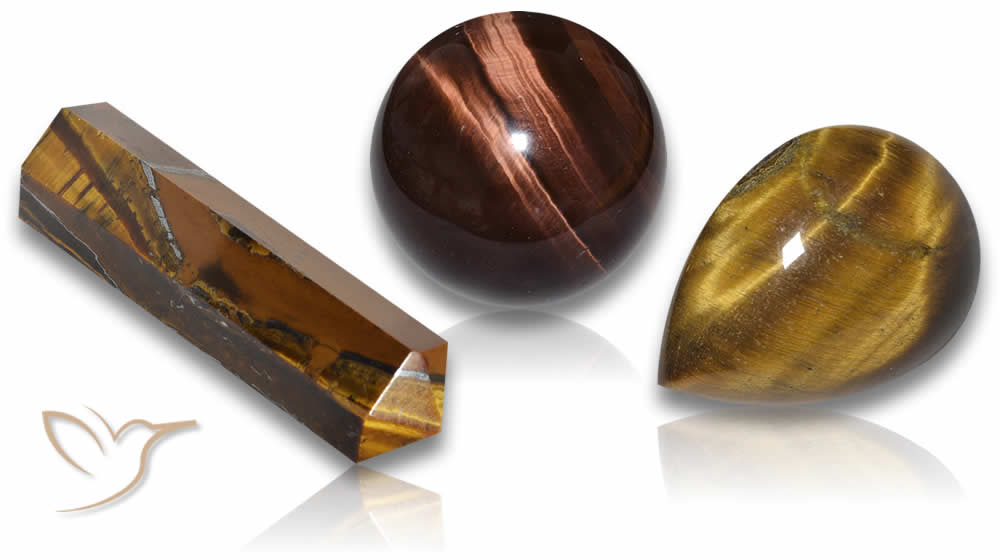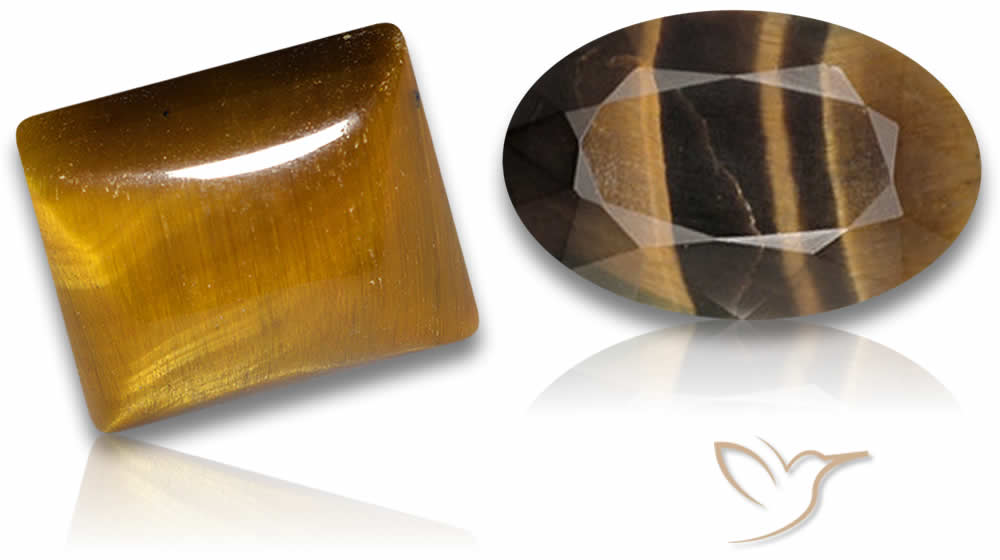Exploring the Beauty of Tiger's Eye Gemstones

Welcome to our dive into the world of Tiger's Eye gemstones. These stones stand out with their striking colors, meaningful symbolism, and properties that many people find beneficial. We'll cover what sets them apart and why they've caught so many eyes over the years.
Disclaimer: The healing and spiritual properties mentioned in this article stem from traditional beliefs and cultural folklore. They are not backed by scientific evidence and should not replace professional medical advice. Always consult a healthcare provider for health-related issues.
Key Takeaways
- Tiger's Eye gemstones appear in different colors, each carrying its own distinct traits and visual appeal.
- This stone holds symbolic meanings linked to personal and cultural traditions.
- People often associate Tiger's Eye with qualities that foster mental and physical harmony, along with support for growth and prosperity.
- It's thought to encourage traits like bravery, power, concentration, and mental sharpness.
- In summary, Tiger's Eye stands as a striking and influential stone that draws interest for its special qualities and attributed benefits.
Tiger's Eye Gemstone Colors and Variations
Tiger's Eye gemstones are famous for their warm, golden-brown tones at first look. But dig a little deeper, and you'll find a whole range of shades, from deep reds and earthy greens to blues and blacks. Each one brings its own look and associated meaning, adding layers of interest to this stone.
The classic golden-brown type is the most familiar, valued for its grounding effects - perfect for everyday jewelry. Then there's the blue kind, called Hawk's Eye, which some say boosts intuition and deeper understanding. The red version, with its vibrant warmth, ties into energy and vitality.
| Tiger's Eye Stone Color | Meaning and Properties |
|---|---|
| Golden-Brown Tiger's Eye | Grounding, Stabilizing, Protection |
| Blue Tiger's Eye (Hawk's Eye) | Intuition, Insight, Spiritual Growth |
| Red Tiger's Eye | Vitality, Strength, Courage |
| Green Tiger's Eye | Balance, Growth, Abundance |
| Black Tiger's Eye | Protection, Grounding, Self-Control |
Every color offers something different, so picking one can feel personal - like tailoring its influence to your needs. Jewelers often mix shades for pieces that are both eye-catching and meaningful. Isn't it cool how one stone can offer so much variety?
All in all, the diverse colors make Tiger's Eye adaptable and appealing, whether you're wearing it or just admiring it. For more on this, discover detailed Tiger's Eye gemstone information.

Symbolic Significance of Tiger's Eye Gemstones
Tiger's Eye has held meaning in cultures around the world for ages. In ancient Egypt, it symbolized the eye of the sun god Ra, offering protection and bravery in tough times.
Elsewhere, it's seen as a sign of wealth and good luck. Carrying it might just invite more prosperity your way, or so the stories go.
It also connects to wisdom and equilibrium, sharpening intuition and clearing the mind for better choices. Ever feel like you need a little extra focus? This stone might be the ticket.
"Tiger's Eye serves as a potent aid for fostering positive shifts and development, on both physical and spiritual levels."
From safeguarding to drawing in success, Tiger's Eye's symbolism crosses eras and places, offering a bit of something for anyone who connects with it. To learn more, explore Tiger's Eye meaning, power, and practical uses.
Properties and Benefits of Tiger's Eye Gemstones
With their bold look, Tiger's Eye gemstones aren't just pretty - they're credited with qualities that aid growth and wellness. Here's a breakdown of what they're often said to do:
| Tiger Eye Gemstone Properties | Tiger's Eye Gemstone Uses | Tiger Eye Stone Benefits |
|---|---|---|
| Balance: Thought to support emotional steadiness in the mind. | Meditation: Helps sharpen attention during quiet reflection. | Courage: Encourages boldness and honest expression. |
| Protection: Believed to shield from negative vibes. | Jewelry: Commonly featured in necklaces, bracelets, and more. | Wealth: Said to draw in prosperity. |
| Grounding: Known for calming influences. | Decorative: Adds flair to homes or offices. | Optimism: Promotes energy and positive outlooks. |
If you're after a stone that blends physical perks with deeper ones, Tiger's Eye could be worth a closer look.
Healing Properties of Tiger's Eye Gemstones
Tiger's Eye is linked to various healing effects. It's said to build courage, inner strength, and confidence, aiding in facing fears. On the mental side, it might sharpen focus and clear thoughts - handy if concentration is a challenge.
Physically, some believe it eases stress, relaxes muscles, and calms inflammation. It's also tied to better digestion, faster metabolism, and more energy, appealing for natural wellness support.
In metaphysical terms, it aligns with the solar plexus chakra, boosting self-worth and personal power. Wearing it or using it in meditation could tap into that, according to believers.
This stone packs a lot of history and potential benefits, whether for mind, body, or spirit.
Conclusion
We've covered the stunning aspects of Tiger's Eye, from its color range to its meanings, qualities, and potential healing roles. This stone resonates in many traditions, often linked to harmony and plenty.
With shades from golden brown to rich red, it's visually impressive. Symbolically, it stands for bravery, might, and safety, while supporting growth and drawing good things.
Its attributes include boosting mental sharpness, bodily balance, and even easing worries.
Whether for their appearance or reputed powers, these gemstones make a great addition. Hopefully, this has sparked your interest in learning more.
Frequently Asked Questions
What are Tiger's Eye gemstones?
Tiger's Eye gemstones are a type of beautiful and mesmerizing gemstone that feature unique banding patterns resembling the eye of a tiger. This gemstone is a form of quartz that is known for its striking chatoyancy, which is the optical phenomenon that creates the shifting bands of light within the stone.
What colors and variations can Tiger's Eye gemstones have?
Tiger's Eye gemstones come in a variety of colors and variations. The most common color is a rich golden brown, but you can also find Tiger's Eye stones in shades of red, blue, and even green. The color variation depends on the concentration of minerals within the stone, giving each gem its unique hue.
What is the symbolic significance of Tiger's Eye gemstones?
Tiger's Eye gemstones have symbolic significance associated with strength, courage, and protection. It is believed to mimic the qualities of a tiger, representing focus, determination, and confidence. This gemstone is thought to bring luck and ward off negative energies, making it a popular choice for spiritual jewelry.
What are the properties and benefits of Tiger's Eye gemstones?
Tiger's Eye gemstones have several properties and benefits. They are believed to promote personal growth, enhance self-confidence, and attract abundance. This gemstone is also said to stimulate motivation and creativity, making it an ideal stone for those seeking to overcome challenges and manifest their goals.
What are the healing properties of Tiger's Eye gemstones?
Tiger's Eye gemstones are believed to have numerous healing properties. They are said to promote courage, strength, and resilience, helping individuals navigate through difficult times. Additionally, Tiger's Eye is thought to improve mental clarity, focus, and concentration, making it beneficial for people working on tasks that require precision and attention.
How can I identify Tiger's Eye gemstones?
Tiger's Eye gemstones can be identified by their distinctive chatoyant appearance, which creates the appearance of a moving band of light. When light reflects off the stone, it creates a silky, shimmering effect that resembles the eye of a tiger. Professionals can also use gemological instruments to confirm the stone's identity.

